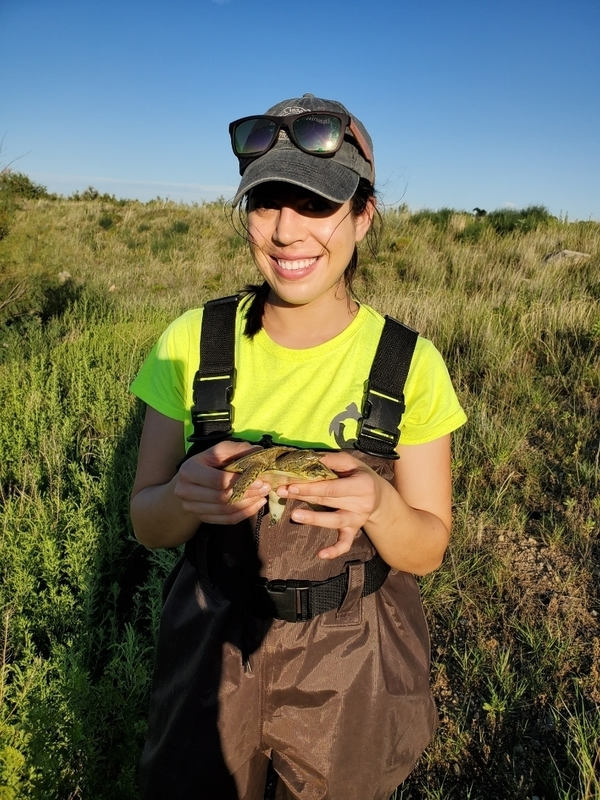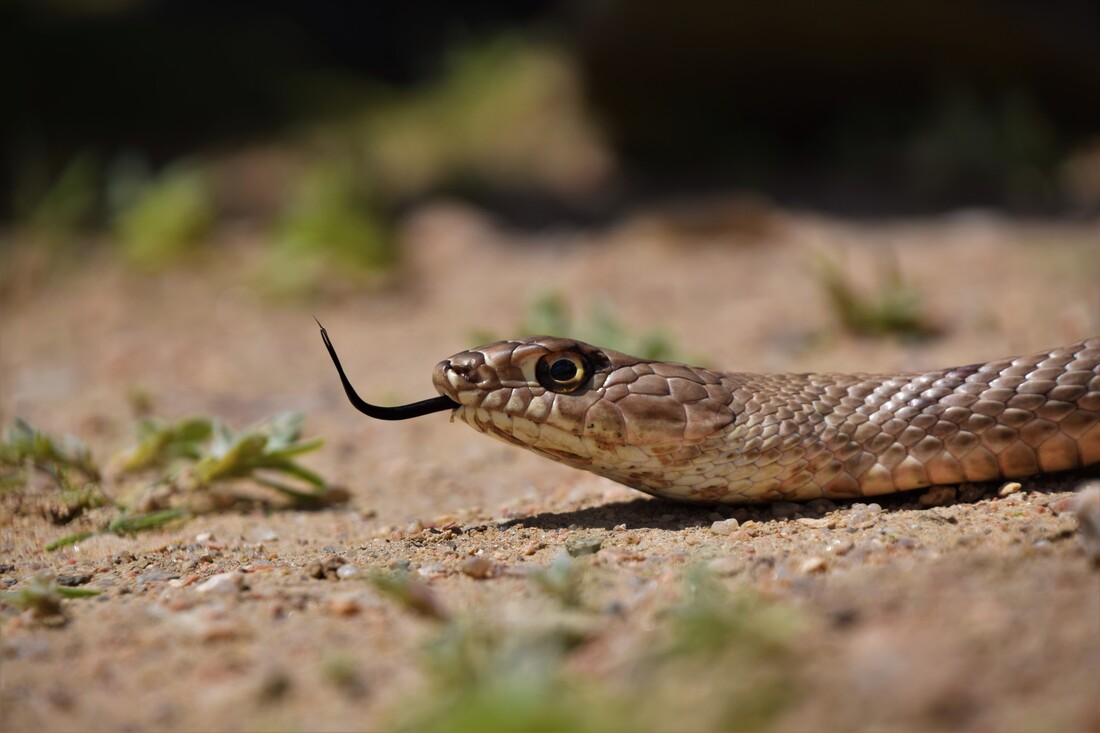|
Adaptation has been on the road this summer! We’ve been to California, New Mexico, and a little closer to home, Southeastern Colorado! Our work in Colorado has been with Colorado Parks and Wildlife (CPW) and their Resource Stewardship team, conducting herptile (reptile and amphibian) surveys. Our goal is to identify the reptile and amphibian diversity at various Colorado State Parks and provide education and outreach materials as well as management recommendations. In order to determine the different species at any given state park, we employ a variety of methods. Our surveys consist of turtle trapping, walking and searching, natural cover board surveys and road cruising. Natural cover board surveys refers to turning over rocks, decaying logs and leaf litter. However, this is done carefully and with gloves and tools to stay protected in case we flip anything dangerous (e.g. a surprise Prairie Rattlesnake). Road cruising is an important technique because roads hold heat longer compared to other surfaces, this makes it attractive to reptiles who can’t regulate their heat internally and therefore, look for warm surfaces for basking. Furthermore, roads create transects that are easy to survey. Biological Technician, Norma, with Spiny Softshell Turtle, caught in a funnel trap. We visited a few state parks this summer, including one in Southeastern Colorado. Our team observed 28 different species by the end of the summer! Some of our exciting finds include, Spiny Softshell Turtles, Green Toads, Plains Leopard Frogs, Great Plains Ratsnakes, a Plains Black-headed Snake, a Longnose Snake, Red-sided Gartersnakes, a Lined Snake, and a New Mexico Threadsnake. “Herps”, as we like to call them, play important roles in their ecosystems. Some keep prey populations in check, for example, frogs eat insects and snakes eat rodents, which controls the spread of disease. Many herps are also important prey for predators and help keep food webs in balance. A diverse herp population is indicative of a healthy ecosystem. When herp populations are diverse and healthy, this means that the environment they are in can support a variety of wildlife. More biodiverse environments are more sustainable and lead to more balanced, functional systems. It was very promising to see such a diverse population at the state park. With records of these animals, CPW and park rangers can work together to help protect and maintain these ecosystems and animal populations so many of us can enjoy them for as long as possible. Coachwhip snake, observed on a survey at John Martin Reservoir State Park.
3 Comments
12/28/2023 03:57:54 am
I wanted to express my gratitude for your insightful and engaging article. Your writing is clear and easy to follow, and I appreciated the way you presented your ideas in a thoughtful and organized manner. Your analysis was both thought-provoking and well-researched, and I enjoyed the real-life examples you used to illustrate your points. Your article has provided me with a fresh perspective on the subject matter and has inspired me to think more deeply about this topic.
Reply
12/28/2023 04:14:59 am
I wanted to express my gratitude for your insightful and engaging article. Your writing is clear and easy to follow, and I appreciated the way you presented your ideas in a thoughtful and organized manner. Your analysis was both thought-provoking and well-researched, and I enjoyed the real-life examples you used to illustrate your points. Your article has provided me with a fresh perspective on the subject matter and has inspired me to think more deeply about this topic.
Reply
Leave a Reply. |
Rattler TattlerAuthorsAdaptation Environmental Team: Bryon, Joe, and Kelly Categories
All
Archives
July 2023
|
|
Copyright © Adaptation Environmental Services L.L.C. circa 2012
|
Denver, Colorado
|



 RSS Feed
RSS Feed